:quality(80)/business-review.eu/wp-content/uploads/2017/10/fis2017.jpg)
High-level executives, entrepreneurs, officials and investors from the strongest foreign investment communities will gather for 3 days in Bucharest to talk about Romania’s economic outlook and the ways in which the country can attract valuable investments in the next years, while supporting the development of the private sector. Here are the main statements from the first day of the fourth Foreign Investors Summit, the exclusive event organized by Business Review.
FDI Growth
Alex Milcev, Tax&Law Services Leader, EY Romania. What will 2018 bring us?
The 16 percent taxation has been in force for some years and investors are attracted by that. The fact that it is a unique tax rate, is attractive, compared to neighbouring countries. Due to state aid rules, state aids were changed after Romania joined the EU. Currently, there are incentives for the IT sector, such as the R&D. But Romania is not offering heavy tax incentives, apart from the relatively reduced 16 percent taxation.
What is the potential in Romania to suffer from double taxation? A frequently overlooked fact is that Romania has one of the best network in the world of bilateral taxation agreements. It means investors coming from foreign countries have the framework to make their investors comfortable in Romania and avoid double taxation. From this point of view, Romania is an attractive destination and has made long strides in terms of developing its legislation and how litigations are dealt with.
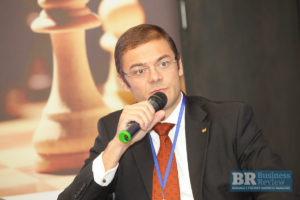 So Romania is an attractive tax jurisdiction. But investors in Romania mostly appreciate stability and predictability. In the past six months, the government has tried and proposed, then withdrawn proposals for new taxes. The transfer of obligations to pay social contributions from the employer to the employee, the split VAT payment proposal and more.
So Romania is an attractive tax jurisdiction. But investors in Romania mostly appreciate stability and predictability. In the past six months, the government has tried and proposed, then withdrawn proposals for new taxes. The transfer of obligations to pay social contributions from the employer to the employee, the split VAT payment proposal and more.
Right now, there are two ways to invest in Romania, via equity or loan. This state of affairs will be reviewed. It is a move to push the direction of investment, from debt to equity. Changing dramatically in one month without a public consultation a piece of regulation that was used for decades is bound to create difficulties.
The biggest challenge is the threat to the storability and predictability in the financial sector which rattles both Romanian and foreign investors. So investors might go to other friendlier places.
Romania’s priority for 2018 is calming down the business environment.
Anca Harasim, executive director of AmCham Romania: For Trade Wings more than a hundred US companies came to Romania. The US commerce department organises this event every two years and Bucharest was chosen for this year. From the design of this event, Romania was positioned as a hub.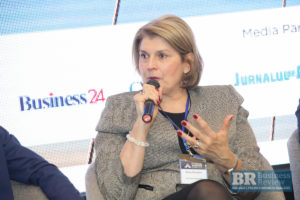
It took a lot of effort to create this event so if there is no favourable environment here the companies will change their mind.
Romania’s priority for 2018 is alignment.
Charlie Croker, CEO BRCC: A lot of the businesses we’re talking to are very interested to increase their investment here, even to triple them. But they are having problems communicating with the 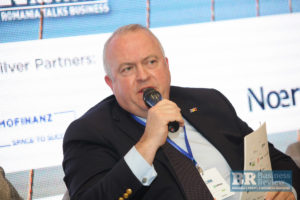 government. It’s the reliability of legislation across the board, regulation regarding the labour market, not just fiscal stability.
government. It’s the reliability of legislation across the board, regulation regarding the labour market, not just fiscal stability.
Also, we are seeing a lot of interest for new UK companies to invest in Romania. They see Romania as a growing economy, a good country from the point of view of human resources, as well as a stable geopolitical destination.
Adriana Record, executive director, CCIFER : This year Romania lost 17 percent of the FDA, less investment came in Romania. The positioning of the economy is playing a role and the opportunity to be seized is the transition from the labour economy to the digital economy.
The economic outlook and attractiveness are less favourable than last year, especially due to the unpredictability of legal and fiscal reforms.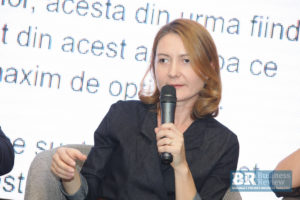
For the French investors community, the fourth investor in Romania, they are looking for the opportunity to grow their business, to become more competitive at a global level, looking for talent, skills and efficiency. The policy of stick and carrot which is applied now, if nothing changes the investors will leave, will not have long-term effects. Investors must share the mission. An ambition is more important for future investor than the risk to leave if nothing changes.
Romania’s priority for 2018 is predictability.
Manuela Furdui, Managing Partner, Finexpert: This year we had only one session for one state aid scheme for very low offering. Today there are two state aid scheme for investors that decide to come to Romania. The first, the GD 807 started in 2014 is for investors who want to invest more than EUR 10 million. The grant goes up to 70 percent of the total eligible cost, depending on the region and can be EUR 145 million and there was no session for this year. We could not get an answer for this from the ministry.
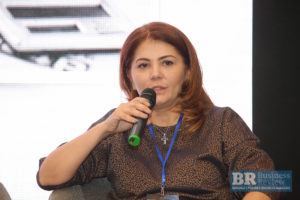 The second is for those who will her more than 10 people in a period of 3 years. This was open in June and had a budget of RON 100 million.
The second is for those who will her more than 10 people in a period of 3 years. This was open in June and had a budget of RON 100 million.
State aid was and is one of the advantages and reasons why investors are looking at Romania. I had more than 20 meetings with investors and we could not provide them with a solution. For this year, we missed the investment and we cannot give an answer about when it will happen.
Raluca Popa, Advisor, Ministry for Business Environment.The government predicts that 807 will open at the beginning of next year. We like to believe we are
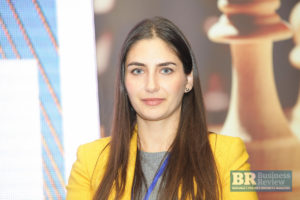 the contact point for investors and all your messages on predictability, fiscal policy will be passed on. I encourage all companies to come and tell us what they need to solve. Right now, as Invest Romania we are looking for an investment strategy to identity brownfield and greenfield investments in Romania and are working and want to make Romanian authorities more active and ask them about local opportunities that we want to share.
the contact point for investors and all your messages on predictability, fiscal policy will be passed on. I encourage all companies to come and tell us what they need to solve. Right now, as Invest Romania we are looking for an investment strategy to identity brownfield and greenfield investments in Romania and are working and want to make Romanian authorities more active and ask them about local opportunities that we want to share.
Country Strategy
Matteo Patrone, director for Romania, EBRD: On the image of the country, he said that on one side a very
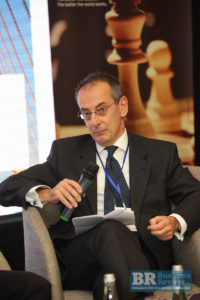
promising private sector, while the public sector lags behind. The country has done significant progress over the last year – the fight against corruption a very positive aspect.
The country has shown quite a bit of resilience to external shocks, he added, citing for instance the Ukraine-Russia and migrant crisis.
Clearly, there is a need to swift growth from consumption model to investment model. The consumption model is not sustainable. He said the shift of the model is urgent and is needed for infrastructure development.
Dragos Pislaru, partner, Civitta Romania: We have a lot to do on the investment side, both on private and public side. The end game is innovation and the only serious constraint is human capital.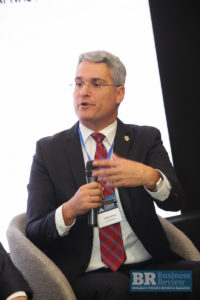
We have 3 percent of the population that are doing training each year, said Pislaru, adding that in Denmark this figure stands at 30 percent.
We lack investment in people, that’s something that is critical for the country strategy. Right now, we are investing EUR 100,000 in order to prepare students for medical studies.
Franz Weiler, president, Foreign Investors Council:
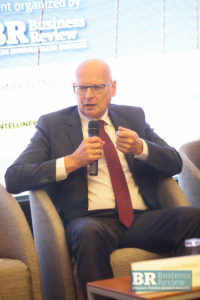 He said that infrastructure and education are two of the areas which Romania needs to focus on by 2050.
He said that infrastructure and education are two of the areas which Romania needs to focus on by 2050.
We see overnight measures are published, discussed three days later, said Welier, adding that the social dialogue is critical between all stakeholders.
Enhancing bilateral economic relations with key players
Anca Harasim, executive director AmCham Romania: I don’t see an EU-US battlefield in Romania. Investors from both areas are guided by the same principles.
If we look at the current situation, we were able to provide a balance between choices. The time has come for Romania to revamp its defense industry and reopen some its facilities with NATO technologies, creating jobs and economic growth from this industry.
“Despite the growth, the business community has never been more pessimistic than today,” said Harasim. From the business community we made a big effort to align a significant part of the business community with one voice in relation with the government.
This governmental program was not put in a larger context and this is what is missing, said the AmCham representative.
The larger picture is missing. We don’t know what kind of Romania we want to build, said Harasim.
Andrei Tarnea, general commissioner of the Romanian-France Cultural Season: The US becomes increasingly transactional in its interactions and more nationalistic. This trend has systematically appeared in Europe.
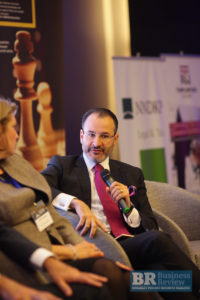 How the next decade is going to play out inside and outside the EU. Europe needs to reforms and needs to reform profoundly, similar to member states.
How the next decade is going to play out inside and outside the EU. Europe needs to reforms and needs to reform profoundly, similar to member states.
The largest private sector debt in Europe is owned by German companies, said Tarnea.
There is a lot to learn from German’s success, he added citing the economic model of the country.
“Romania needs to more flexibility when it comes to its own economic development. If we continue to be divided on social policy we will not succeed,” he added.
In practice, the role of bi-lateral relations is to allow Romanian governments to really understand that the way we’ve done it until now it’s not going to work. (…) The window of doing what it takes is getting narrower.
Dragos Anastasiu, president, AHK Romania: We are talking about having some measures on Friday and the final decision on Monday. This is for Romania the challenge for the next 2 years. We know what we have to do, but sometimes we have the feeling that some have their own agenda.
Probably, Germany is the first investor in Romania. We are talking about a EUR 30 billion trade between Romania and Germany.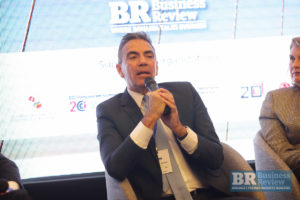
Regarding the future from the German perspective: Germany will remain predictable, will have positive budget similar to the last 4-5 years. (…) Romania should follow this example.
 The potential is much bigger of Romania-Germany relations. From the discussions with our members, almost all projects are on hold because of the predictability and the work force. It’s hard to invest in such an environment, said the head of AHK Romania.
The potential is much bigger of Romania-Germany relations. From the discussions with our members, almost all projects are on hold because of the predictability and the work force. It’s hard to invest in such an environment, said the head of AHK Romania.
Jorg K. Menzer, partner, head CEE Offices, Noerr: “I know certain people in administration who say now we want to be employees in the public sector”
Macroeconomic context
Ramona Chirila Lohan, representative of the Romanian government on behalf of deputy PM Marcel Ciolacu:
I want following the debates to offer concrete solutions on the economic model approached by Romania. The program aims to reduce the gaps between living standards of Romanians and of their peers in Western Europe.
We have the biggest economic growth in Europe of 5.8 percent and a record low unemployment rate. We have to make sure we promote a durable economic growth.
Romania, despite the progress in the last years, continues to remain below its real potential and the fulfillment of this objective relies on the increase of investments, the retention of the workforce and the fiscal predictability.
The government official says that the authorities are focusing on infrastructure projects, most of which will be backed by EU funds.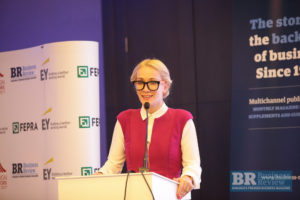
This year, we were able to create 110,000 new jobs and we reached a historic low of unemployment. However, we fell a certain pressure on the labor market especially in case of companies looking for talent.
We can’t grow if we continue to export the work force.
We are looking to extend the dialogue with the private sector through special departments and cross departments. We want to have a schedule with follow-ups, gathering all stakeholders at the table.
We are working on a new dialogue platform, aiming to bring together all stakeholders so as to identify the strengths, weaknesses and very rigorous follow-ups. In the following months we will have a proper dialogue tool.
Valentin Lazea, the chief economist of the BNR:
In 1913, “Little Romania” had a GDP/capita (at PPS) equivalent to 67 percent of the then-European average.
After one century, Romania has returned to the same level of relative development.
Periods of important reforms (1997-2006 and 2010-2014) alternated with periods of modest of stalled reforms (1990-1996, 2007-2009, 2015-2014). The latter were characterized by pro-cyclical fiscal and wage policies.
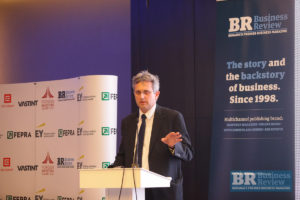 In the last 27 years, more than half of the time Romania has carried out some serious reforms. The reforms included the supervision of external institutions such as the IMF, the WB and the European Commission.
In the last 27 years, more than half of the time Romania has carried out some serious reforms. The reforms included the supervision of external institutions such as the IMF, the WB and the European Commission.
The ideology doesn’t play a role in Romania when we are talking about reforms.
In the first 7 months, the unemployment rate has fallen to pre-crisis level.
Romania had at the end of last year the third largest deficit after France and Spain without taking into account the fiscal easing from 2017 and 2018.
When you are running deficits at limits, during crisis periods you are very exposed.
Romania can’t grow by 5 percent yearly only with fiscal stimuli and wage relaxation. He added that Romania has a potential GDP growth of 3.5 percent at this moment without creating inflation.
The income of the first 20 percent in Romania is 8 times more than the bottom 20 percent, the biggest gap in the EU. He added that the Gini coefficient stands at 35.9 percent, compared to 30.9 percent for the EU.
Oana Popescu, regional political analyst, cited among risks the unstable international relations, the Russia file on US elections, the increase of protectionism and nationalism from an economic and political perspective.
The usual risks stay, but which can take new shapes such as international terrorism.
The usual risks stay, but which can take new shapes such as international terrorism. She said that other risks come from anything on disruptive on politics, economy, labor force, digitalization.
Depending on how the EU and the Euro zone does, we will be impacted. The EU has to manage multiple crisis and no member state has the capacity to manage them on the own or at Union level.
The elites have to answer in front of the people during elections, making it the deliverables to be on the short term while the demands are on the longer term.
It is more clearly (…) we have a regional situation that doesn’t help us. We have more states in Central-Eastern Europe that have a more autonomous economic approach, with numerous divorces from international institutions, and free riders from the rule of law and political stability.
Romania got an advantage that it didn’t have up to now. At present we are interesting because we are not joining the regional approach, because Romania fundamentally depends on Western Europe, the core of the EU.
We are in a region in which our strategic goal is to go West.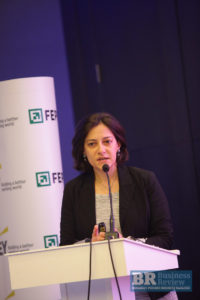
Starting June 2018, I expect the evolutions in Romania to enter in a modus-vivendi with the European Commission. Starting next year, the EC is set to encourage us.
She said that aside from the good economic growth, Romania’s economy still has structural deficiencies and the fact that GDP growth did not reflect in development will harm the country of the long term.
I don’t expect issues from the economic side, but more on the judiciary and the ways in which the government might make a mark on this in 2018.
Those around us will continue to lack discipline. As long as we are economically stable we remain interesting at regional level.
“Investors will continue to go in Poland, Hungary, which remain stable markets no matter how undisciplined they are (on politics -e.n.)”
HE Stella Ronner-Grubacic, ambassador of Netherlands in Romania:
Agrifood, IT, transport& logistics, water, among the core sectors in which Dutch multinationals and SMEs are active. There are over 4,600 companies with Dutch capital in Romania.
We need to make our economies and industries fit for the future. We need to transform, progress together in the European framework. We need to prepare our economies for the future.
“One third of our GDP is obtained through exports,” said the ambassador.
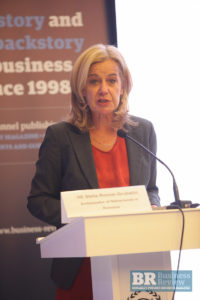 Romania is considered to be a rapidly growing market, from the point of view of the Dutch, said the diplomat.
Romania is considered to be a rapidly growing market, from the point of view of the Dutch, said the diplomat.
Lack of investments in infrastructure and education, some of the issues mentioned by Dutch companies that have mentioned when talking with the ambassador.
Areas in which Dutch worked with Romania on innovation: Agri-food – dairy, fruit, horticulture sectors. The country has great quality soil, underdeveloped internal market.
Romania’s agri-food sector misses greenhouse and irrigation innovation, said the ambassador.
A smart city is also about environmental awareness, smart government and smart citizens. Improve sustainability and livability of cities. Romanian cities are catching up. A group of Romanian mayors have been invited to visit the Netherlands next year to see smart cities.
Circular economy – Romania has some challenges, especially when it comes to recycling or waste management or on irrigation and rain water reuse.



:quality(80)/business-review.eu/wp-content/uploads/2024/07/vodafone-RO.jpg)



:quality(80)/business-review.eu/wp-content/uploads/2024/06/22C0420_006.jpg)

:quality(80)/business-review.eu/wp-content/uploads/2024/06/COVER-1-4.jpg)



:quality(80)/business-review.eu/wp-content/uploads/2024/06/br-june-2.jpg)
:quality(50)/business-review.eu/wp-content/uploads/2024/07/BeFunky-collage-37-scaled.jpg)
:quality(50)/business-review.eu/wp-content/uploads/2024/07/04_ThinkPad_T14s_6_Business_Coworking.jpg)
:quality(50)/business-review.eu/wp-content/uploads/2024/07/Iulia-Surugiu-scaled.jpg)